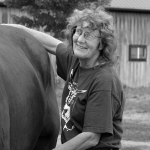
Hemp is all the buzz these days, and for good reason. It’s a plant with literally thousands of uses. Hemp is used for clothing, to fuel, to paper,
and everything in between. It is a weed and capable of growing in many different conditions with little additional fertilizer or other inputs. Hemp is nutritious and can have medicinal properties.
Definitions
- Hemp is known by the Latin plant names as Cannabis sativa or Cannabis indica. There is not a clear botanical differentiation between the two species, despite some claims otherwise. And in modern times cross-breeding has blurred the lines even more. Hemp is a cannabis plant that contains no detectable level of tetrahydrocannabinol (THC) the ingredient that can make the user “high.”
- Omega-3 and omega-6 fatty acids are found only in the seeds of the plant. Omega-3 is an essential fatty acid that cannot be made in the body, so it needs to be eaten.
- Industrial hemp is generally grown for its fiber (stems) and seeds. The plants are grown close to each other to promote tall stemmy fibrous plants with lots of seeds. It contains very little if any of the cannabinoids (CBDs) found in the leaves.
- Medicinal hemp is grown to enhance the leaf and bud growth, with high levels of CBD and no omega-3 or omega-6 fatty acids.
Hemp seeds are the most nutritious part of the plant used as food. They contain about 20 percent protein, six percent carbohydrates, and about 73 percent healthy fats. They also have significant amounts of calcium, magnesium, manganese, phosphorus, potassium, zinc, and vitamins A and E. Most diets contain an excess of omega-6 (an inflammatory compound). Hemp contains a healthy balance of omega-6 (linolenic acid (25 percent) to omega-3 linoleic acid (55 percent) which is an anti-inflammatory compound and considered a perfectly balanced ratio.
Hemp also contains the omega-6 fatty acid gamma-linolenic acid (GLA), a compound not frequently found in food. Even though it is a type of omega-6, it has excellent anti-inflammatory properties, as well as cancer-fighting immune support and support for insulin resistance (IR).
Hemp protein is highly bioavailable, although it is not a complete protein to replace all other sources. One ounce of seed contains 9.2 grams of protein. Sourcing enough hemp seeds to feed your horse has been difficult and expensive. This is changing with Praise Hemp products of Canada being available here, in the United States. Hempseeds and the protein that comes from the processing of them is a fabulous way to feed your horse’s protein without genetically modified corn and soybean in the diet.
Hemp oil is now affordable with the Harmany Hemp product line and makes an excellent addition to your horses’ diet for its omega-3 and omega-6’s. It must be refrigerated in the hot weather, so it may not be convenient to feed depending on your barn. It may be easier to feed the seeds, although even those should be kept cool. You could keep a week’s worth at the barn and the rest at home in the air-conditioning in the warm weather.
Hippocrates, many years ago stated: “Let food be thy medicine and medicine be thy food.” And in the case of hemp, it’s very true!
Dr. Joyce Harman graduated from Virginia Maryland Regional College of Veterinary Medicine and became a member of the Royal College of Veterinary Surgeons. She is certified in veterinary acupuncture and veterinary chiropractic. She has completed advanced training in homeopathy and herbal medicine and in Chinese medicine. Dr. Harman has served as president of the American Holistic Veterinary Medical Association, chairman of the Alternative Medicine (Therapeutic Options) Committee for the American Association of Equine Practitioners and has been a member of the task force on alternative medicine for the American Veterinary Medical Association (AVMA). Since 1990, Dr. Harman owns Harman Equine Clinic, a holistic veterinary practice, in Washington, Virginia. Visit www.harmanyequine.com.




